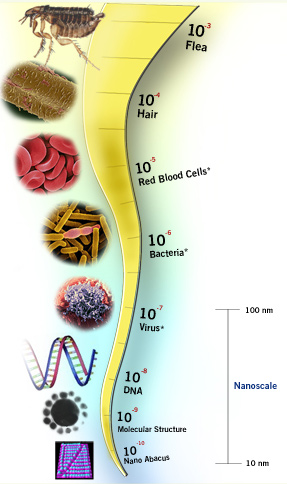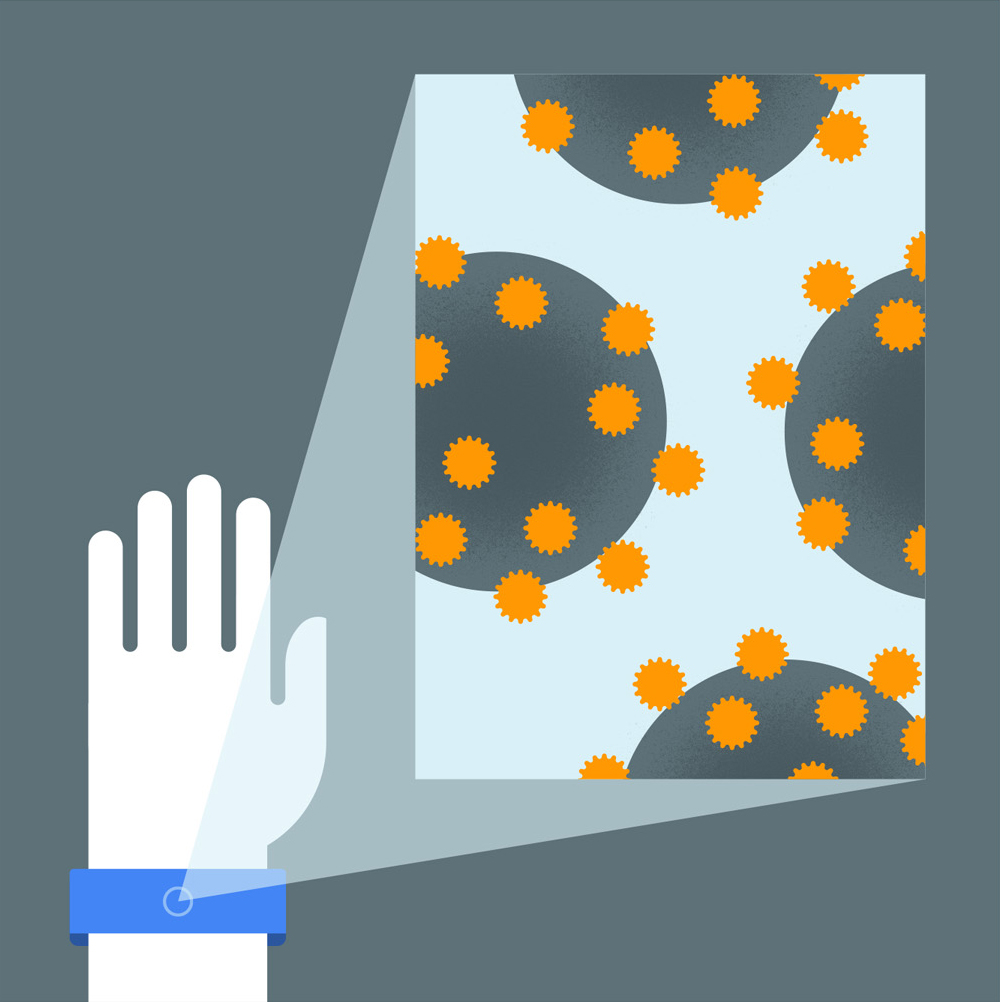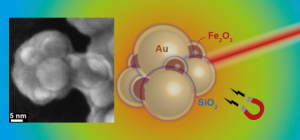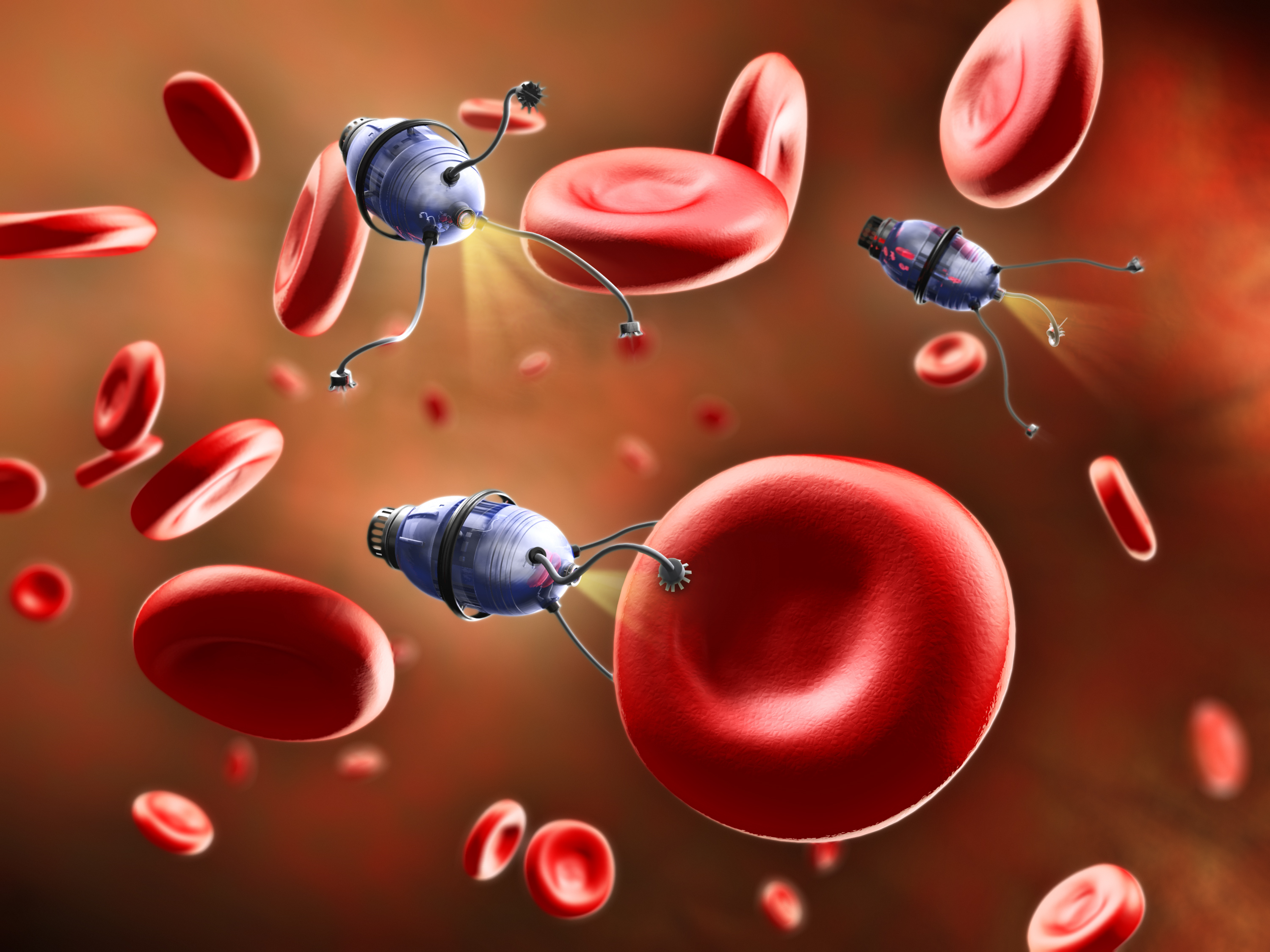All cancer cured! … Hearing an announcement like that is unimaginable. It is something so incredible, we dismiss even its possibility. Sure, we are making progress in treatment, and last year even more people were saved from cancer, than those who died. But total eradication? “Yeah, maybe one day”, is what we all say. Let’s think about the possibility of that day coming in as little as 15 years.
 What is Nanotechnology?
What is Nanotechnology?
It’s time for thinking small. Nanotechnology (nanotech) is the manipulation of matter at the atomic and molecular scale. The nanoscale is invisible to the human eye – thousands of times smaller than the width of a human hair.
Manipulation and engineering at the nanoscale is set to completely revolutionise pretty much everything, from making water supply simple and easily available, to giving us computers that are billions of times more powerful than they are today.
Visit our main page about nanotechnology to learn the basics, and find out about more revolutionary advances, from the awesomeness of creating superhumans, to the peril of threatening our very existence.
How it will Cure Cancer
We will not suddenly go from barely hearing about the use of nanotechnology in the fight against cancer, to hearing an announcement that it has completely cured all types of cancer. Nanotechnology is steadily and exponentially advancing – as the technology advances, and more applications for it are found, more advanced methods are being devised for its use in the fight against cancer.
4 Phases in the Evolution of Nanotechnology
Generally, the evolution of nanotechnology can be broken down into 4 phases. Phase 1 features the creation of passive nanostructures – such as graphene. Phase 2 features active nanostructures, which are able to interact with their environment at the molecular level; examples include, self-healing materials, targeted drugs and chemicals, energy storage devices, and sensors. With the ability to create phase 2 products, we will have the necessary technologies to begin phase 3. Phase 3 is the creation of nano devices/machines – featuring a combination of phase 1 and 2 structures which can together perform more complex tasks. And then there is phase 4, the ultimate creation of nano robots (nanobots) – these will be like phase 3 devices, but will be intelligent with he ability to communicate and navigate, they will be self powered and have he ability to self replicate.
Phase 1: Cancer Diagnosis/Treatment with passive nanotech
Nanotech is already taking its first jabs at cancer with its passive nanostructures, however the technology is still in its infancy. New techniques are already in development for the the diagnosis of many types of cancer, and even the treatment of some. Soon, early detection of cancer will become simple and ordinary, massively increasing survival rates.
 Google’s Cancer Nanodetector
Google’s Cancer Nanodetector
Late last year, Google X revealed it is using nanotechnology to develop a method of detecting cancer and other diseases. The aim is to use magnetic nanoparticles which would flow through the blood and communicate with a wrist worn sensor. The nanoparticles are designed to only attach to cancer cells. So, when cancer cells pass the sensor on the wrist, they will be identified.
Reading if the nanoparticles have cancer cells attached to them can be done in 2 ways. The easiest is to use an electromagnet – the particles react differently while in an electromagnetic field, depending on if they are attached to cells, allowing the sensor to identify the presence of cancer. The other method is to use light and radio waves, which is ideal, but will take longer to develop.
Find out more about Google’s cancer nanodetector.
Passive Nano Targeted Chemotherapy, Infrared and Magnetism
Nanotechnology offers the means to aim therapies directly and selectively at cancerous cells. Conventional chemotherapy employs drugs that not only kill cancer cells, but also damage/kill healthy cells, leading to a mass of adverse side effects. There are already nanocarrier-based drugs on the market, which rely on passive targeting through a process known as “enhanced permeability and retention”. The nanocarriers hold the chemicals, and because tumours tend to have leaky blood vessels, the nanocarriers accumulate more inside tumours, where they sit and leak the toxic chemical.
nanocarriers hold the chemicals, and because tumours tend to have leaky blood vessels, the nanocarriers accumulate more inside tumours, where they sit and leak the toxic chemical.
A similar method is being used with infrared light treatment. Nano gold particles are injected into the blood, where they will leak into cancerous cells and accumulate. Then, while being blasted with infrared light frequencies, the partials alone heat up to a point that the surrounding cancer cells burn and die. More information, here.
Scientists at Nanoprobes, Inc. in 2103 created another similar method again involving heating up the cancer cell in order to kill it, but using magnetic particles to achieve the aim. The nano particles which they call FerroMag™ cluster inside tumours, where they are then magnetised externally, causing them to heat up.
Above is only a tiny selection of developments, try a Google search to find much more, or a huge list of different research can be found in an article from understandingnano.com, “Nanotechnology in Cancer Treatment“.
Graphene Strip Drug Delivery
A more advanced method uses graphene strips to deliver different drugs to specific regions of cancer cells – often referred to as the ‘flying carpet’ method. When the graphene strip reaches the cancer cell one drug separates from the graphene and attacks the cell membrane while the graphene strip enters the cell and delivers the second drug to the cell nucleus. This method has currently only been trailed on mouse lung cancer. Find out more about the flying carpet method.
In November 2015, Oregon State University announced a new nanotech treatment for melanoma. Melanoma has a high mortality rate because the lymph nodes tend to act as a haven for cancer cells, and allow them to resist chemotherapy treatment. They say that they use a nanotechnology delivery system to allow drugs to reach the cancer reservoirs in the lymphatic system.
Phase 2 & 3: Active nanotech targets & destroys cancer
This is where things get a hell of a lot more interesting. When scientists talk about their advances in this field, they have to start by asserting they’re not talking science-fiction. Yeah, we’re talking about robots so small we can’t see, rumbling about within our bodies by the trillions!
DNA Nanobots
The most basic phase 2 method currently in trails is being called the DNA nanobot. It’s basically a strand of DNA that is folded into a clam shape, so it can contain a toxic substance. What makes it one of our pretty epic phase 2 nanotech products, is the ability for its clam shape to open on a hinge when it senses it is in contact with a cancer cell – releasing the toxin into the cancer cell and not into normal healthy cells. The video below has a nice explanation.
The creators of the ‘DNA nonobots’ envision a day where we will all have yearly injections of their bots to keep us cancer free.
Cancer will be cured by a kid in his/her bedroom
A super basic idea, the DNA nanobot, can already be envisioned as a cure for cancer. In a world where that is a super basic idea will also live a whole bunch of other new basic ideas. There will be a whole world of new components, waiting for somebody to assemble them and create something we currently can’t imagine.
Just like how a kid in his bedroom got the world connected on social media – A kid in his bedroom, using the power of nanotechnology, has already discovered a way to increase pancreas cancer survival rates from the abysmal 5% to nearly 100%, using Wikipedia and free medical publications as his research base. His method of early diagnosis uses only phase 1 nanotechnology, and is 168 times faster, 26,000 times cheaper (3 cents per diagnosis strip), and over 400 times more sensitive than current methods of diagnosis. It can detect pancreatic cancer in its earliest stages, enabling almost a 100% chance of survival. Learn about his story in the video here.
Assembling the components of the cure
In diagnosis techniques alone, we are touching a future where cancer becomes nothing more than a bullet we keep having to dodge. Early treatment will soon become our functional cure to cancer. Fear will remain, and a hell of a lot of effort will still be needed to ensure we correctly utilise the tech for early diagnosis. Dodging the cancer bullet isn’t easy, but one day, nanotechnology will give you the ability to not have to.
Above is listed breakthroughs using simple phase 1 and 2 nanotechnology. Each breakthrough only targets a specific type of cancer, and either diagnoses or treats. The path to a cure can be likened to building a car – so far all we have done is invent the wheel, discovered oil, and got a soft cushion to sit on. Life is getting easier, but we don’t even have all the components yet, let alone know how to put them together.
Exponential growth into the Phase 3 revolution
Thankfully we live in a world where the exponential growth of our technologies has reached a pace that saw the technological progress of the first decade of the 21st century outmatch that of the whole of the 20th. Supercomputers shrunk down into our pockets, and are on the way into our bodies. Just the century before saw the invention of the first car. Learn more about the exponential growth of our technologies, and how it means the future is coming much faster than we think.
So, phase 3 nanotechnology is the creation of devices which are made up of phase 1 and 2 components: A kids pancreatic cancer detection strip attached to the body of a device which also holds other sensors to detect all other types of cancer – a device which, when activated by its sensors, can notify a smartwatch of what type of cancer has been detected, and can then attach itself to the cancer cell, and release a toxin to destroy it, before telling the smartwatch of its successful treatment.
Such a technology can be easily envisioned within the next 15 years. However, from the day of the creation of the first cancer curing nanobots, we will still have huge developments to make – it won’t therefore be an instant cure. Mass production will need to be perfected, and so initial cost will be extremely high, due to high demand and low supply. Plus the tech will still be going though rapid improvements, both in itself and in its production techniques. All this while it is still being pushed out of testing to desperate terminally ill patients. Cancer charities will switch from funding research, to funding the cost for treatments. It won’t feel like a cure, but we will finally be able to say that the end of cancer is in sight.
Phase 4 – The Ultimate Cancer Cure
 And then, while we are struggling to perfect the tech and make a cure cheep and as easily effective as taking antibiotics, along will come the ultimate cure, when we don’t even need to give cancer a thought any more, when it becomes easier to die of dehydration.
And then, while we are struggling to perfect the tech and make a cure cheep and as easily effective as taking antibiotics, along will come the ultimate cure, when we don’t even need to give cancer a thought any more, when it becomes easier to die of dehydration.
Phase 4 nanobots, will be like phase 3, but will be ‘smart’, they will feature electronic components, be able to communicate and navigate, they will be self-sustaining, they will be able change form and even replicate themselves. Developments will eventually see the creation of nanobots which will be integrated with our bodies – like an upgraded form of the white blood cell, patrolling our bodies, identifying and treating cancer and all types of infection.
Cancer will be thought of as a basic type of illness. We then have much more complex illnesses to battle, such as the constantly adapting flu strains and other viruses including HIV/AIDS, then there is motor neuron disease, parkinsons disease, alzihmahs, etc, etc. And then the ultimate battle will be fought -the battle against ageing.
Nanobots gaining the ability to find and destroy cancer, will be one of the first in a long line of victories for nanotechnology.
We will be releasing articles as the big news hits so be sure to follow us on Facebook.

